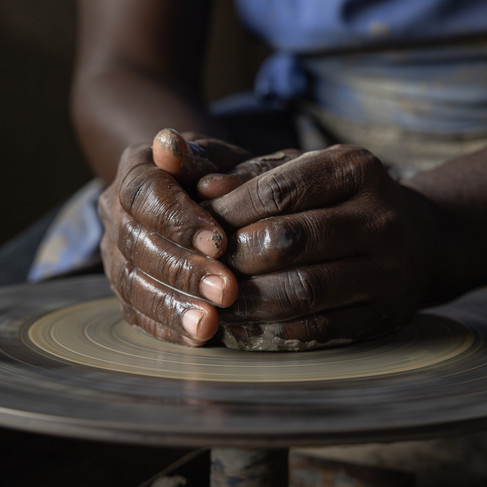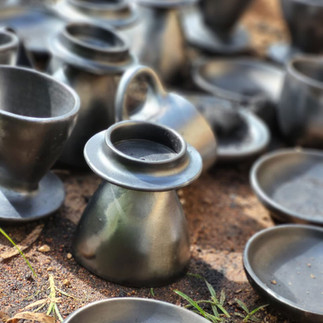From Clay to Cup: The Hands, the Fire, the Story
- Team Mukakasa
- May 3
- 2 min read
Updated: May 8
# KnowWhoMadeIt. #KnowHowIt’sMade.
Meet the hands behind the craft | and the earth-to-table process that makes each piece one of a kind.

KNOW WHO MADE IT
Meet Byrentaro Moses, Master Potter | In Mukono, Uganda, Byrentaro Moses leads his studio where MUKAKASA is produced with skill, care, and deep cultural knowledge. He studied science in high school, then found his path in ceramics, excelling in industrial
pottery. Today, he shapes each cup by hand - one of the few artisans still practising this fire-finish technique in Uganda.
“Making pottery teaches you how to be patient, how to deal with life’s hard and soft situations — and keeps you physically fit.”— Byrentaro Moses, Master Potter
KNOW HOW IT'S MADE
MAKING THE CLAY
100% Manual. 100% Meaningful.
It starts with the Earth. Organic matter is collected and left to decompose for up to a month.
After drying in the sun, it’s crushed, mixed with water, sieved, and sun-dried again to remove impurities — a natural preparation process that takes up to 2 months.
Clay making
MAKING THE CUP
Clay is thrown on a wheel and shaped into a cylinder, opened and pulled by hand. Once leather-hard, a foot is added to the bottom, and a handle is shaped and attached.
Hand-carved patterns are added, then the piece is burnished with natural stones, bonding pigment to clay.
After drying for 1–2 weeks, the cup undergoes two firings:
The first at 960°C
The second smoke-firing brings out the signature black finish.
After cleaning, it’s ready for use — each stage guided by the maker’s eye and hand.
Pottery Studio in Mukono, Uganda
THE BEAUTY OF OIL-STAIN OXIDATION
Not Just Black. A Living Surface.
During the second firing, the natural smoke interacts with minerals in the clay - a magical process called oil-stain oxidation.
Some pieces shimmer with subtle rainbows. Others show streaks and earthy textures. No two are alike.
It’s nature’s signature.

WHY IT MATTERS
This is Slow Craft. Not Mass Product.
Made without glaze or synthetic finish
100% food-safe, non-toxic
A centuries-old technique, still alive in Uganda
No two alike — every cup a story
Bring Story to the Table - Shop the Collection →

“Know who made it. Know how it’s made. Choose what matters."




























Comments